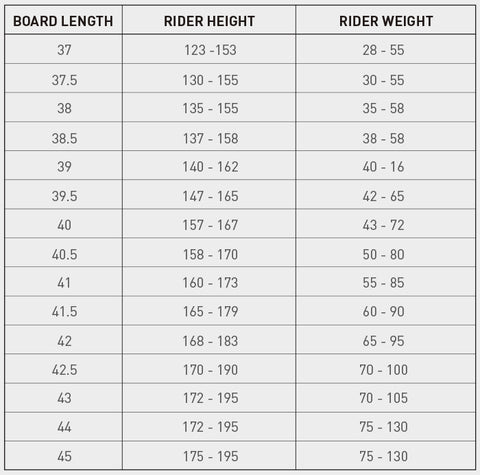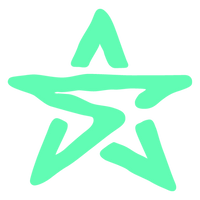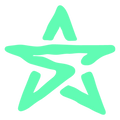Templates

Template
This term refers to the basic shape or outline of the bodyboard (i.e.. narrow nose, wide nose, etc).
Length (1)
This is the overall length of the board. See the Bodyboard Height and Weight Chart (at bottom of page) for correct lengths.
Nose Width (2)
This is the finished nose width of the board, including rail skins.
Width (3)
Wider boards work best in small, weaker surf as they provide more flotation to get you through the sections. Narrower boards are suited to bigger, more powerful waves.
Nose to Wide Point (4)
This is the distance from the nose to the widest point of the board. The distance from the nose will determine the overall template. A high wide-point is suited to prone boards. A lower wide-point is best suited to versatile and drop-knee boards.
Tail
A narrow tail will make the board loose and easy to release for spins and quick turns. A wider tail will pick up speed faster than a narrow tail, but is harder to turn.
Rails
50/50: An even blend between top rail (chine) and bottom rail. best for smaller, lighter riders in small surf.
55/45: The choice for many pro riders these days. The perfect blend between control and speed.
60/40: 60% bottom rail and 40% top rail (chine). The original rail set-up and standard for riders in powerful surf.
Rockers
The rocker refers to how flat a bodyboard is. If you lay the bodyboard flat on the ground, and it doesn’t rise up at all in the tail, it has “flat rocker”. Naturally, the nose curve is going to keep the nose off the ground, but the tail on most production bodyboards should be flat. The more “banana-like” the curve in a bodyboard, the more rocker it has. The rocker of a bodyboard will change as it ages because of the different materials that are used on the deck vs. the bottom. Deck skins tend to expand faster with age. Heat accelerates this process, so keeping the bodyboard in a cool place when not in the water is the best defense for this problem. More rocker will decrease speed, and make the board more responsive. Ideally, a board will have a flat rocker, but enough flex to bend when required.
Bat Tail
Protruding bulb increases the boards planning area for optimal down the line speed. the wings lock the tail in throughout the turn. Machine rounded deck contour for rider comfort.
Crescent Tail
Classic 40° radius curve cut, for rider comfort and quick release. The tail blocks are precision cut for maximum drive out of the bottom turns.

Stringer
A stringer is a hollow, filament wound composite fibre tube used for board strength and instant recoil. A board with a single stringle should not be plugged through the centre of the board.
Mesh
Mesh is a diamond shaped plastic mesh weave, laminated between the core and the slick for improved stifness and recoil.
Graduated Channels
Graduated channels increase the surface area of the slick and channels the laminar flow of water along the rail / hull for enhanced edge control.
CNC SHAPED TEMPLATES
All Stealth boards have a precision cut template shaped by a purpose built CNC (Computer Numerical Controlled) machine. This makes sure every board comes out exactly as planned with no imperfections.


